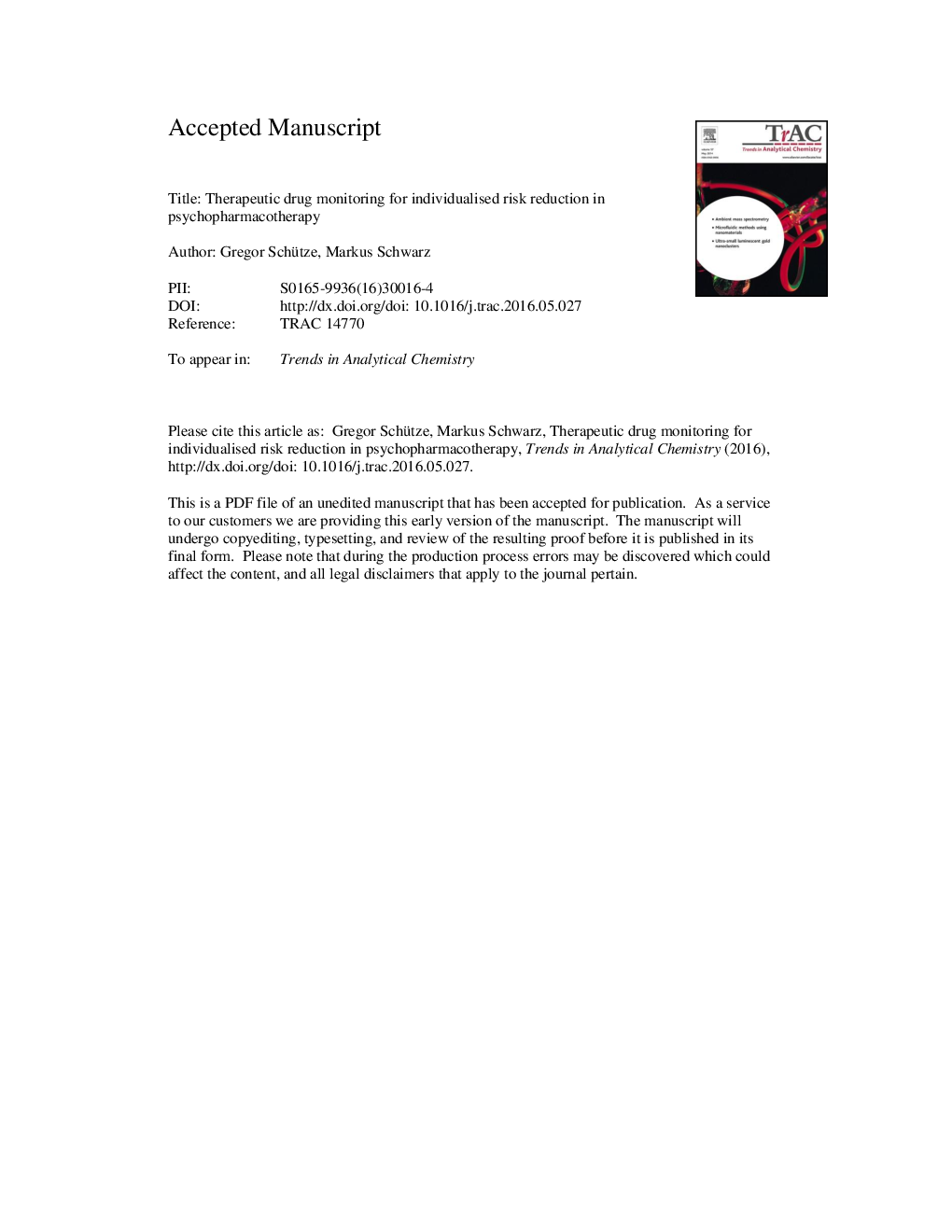| Article ID | Journal | Published Year | Pages | File Type |
|---|---|---|---|---|
| 5141748 | TrAC Trends in Analytical Chemistry | 2016 | 29 Pages |
Abstract
Psychopharmacological treatment is an integral part of modern psychiatry. However, there are several issues regarding safety, tolerability, adherence and response to treatment. Psychiatry was one of the first medical disciplines introducing routine therapeutic drug monitoring (TDM) to increase safety, tolerability and efficacy of pharmacological treatment. During the past decades, TDM in psychiatry includes measuring the concentrations of the administered drug and its major metabolite in serum or plasma and a pharmacological interpretation of the results is required. Typical indications are uncertain drug adherences, tolerability problems, non-response to therapeutic doses or drug-drug interactions under polypharmacy. Especially patients with polypharmaceutical treatment, patients with known or suspected genetically determined pharmacokinetic abnormalities and patients with pharmacokinetically relevant comorbidities or geriatric patients benefit from TDM in psychiatry. This review covers principle aspects of psychopharmacology, describes the pharmacokinetic mechanisms relevant for psychotropic drugs and discusses the analytical aspects.
Keywords
ATP-binding cassette sub-family B member 1CSSABCB1P-gpSPETDMCyPAPCIESIAgNPUGTsLC-MS/MSP-glycoproteinUDP-glucuronosyltransferasesSolid phase extractionPsychopharmacotherapyAntipsychoticDosePsychopharmacologyPsychiatryBlood levelCytochrome P450AntidepressantMass spectrometryPharmacokineticsBioavailabilitymetabolic ratiotherapeutic drug monitoringhigh performance liquid chromatographyHPLCtotal clearanceelectrospray ionisationatmospheric pressure chemical ionization
Related Topics
Physical Sciences and Engineering
Chemistry
Analytical Chemistry
Authors
Gregor Schütze, Markus J. Schwarz,
